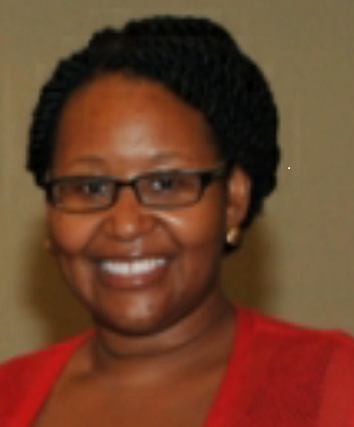
HBCU Researcher Spotlight
Transforming mathematics education to foster diversity in STEM fields: A conversation with Dr. Delayne Johnson, Associate Professor of Mathematics Education at Delaware State University
Article by: Sara Partridge, Ph.D.
Employers across the country increasingly recognize the necessity of recruiting and retaining workers of color in STEM fields. Research shows that diversity in the workforce fosters “productivity, innovation, and entrepreneurship” (Okrent and Burke, 2021 citing Bell et al. 2019; Flabbi et al. 2019; Hsieh et al. 2019). Expanding opportunities for high-paying and in-demand professions to people from historically excluded backgrounds, furthermore, is also a matter of racial and economic justice.
Mathematics education is an essential element of success in STEM fields, but many aspects of the way math is taught put students of color at a disadvantage. The Payne Center spoke with Dr. Delayne Johnson, Associate Professor of Mathematics Education at Delaware State University, to understand some of the barriers that prevent students of color from achieving as highly as their white peers in mathematics—and what efforts and interventions are being made to level the playing field.
“My decision to pursue math education grew out of my own experience as a math student,” Dr. Johnson says. “I saw that I was one of the few Black students in the advanced math classes, and I asked: Why are students of color underrepresented in these classes?” That question guided her career as a math educator, first at the middle and high school levels and, later, at the college level. At DSU, she teaches mathematics education, training future math teachers. She also works to continuously improve mathematics pedagogy at DSU by running a professional development and pedagogy workshop for the university’s math faculty called the Mathematics Teaching Institute.
Dr. Johnson pointed to common teaching practices and aspects of mathematics learning environments that work as barriers for students of color. The practice of “tracking,” or sorting students by perceived ability level—particularly from too young an age—can negatively impact students’ “mathematics identity,” or how they view themselves as math learners. Racial disparities in tracking can convey expectations that students of color are less likely to succeed in math—a self-fulfilling prophecy that creates “a mindset and self-identity” that can prove challenging to overcome.
By contrast, being taught to have a “productive disposition”—one “toward perseverance” that “empowers students” to learn and improve—is shown to be one of the strongest indicators of success in STEM fields. Therefore, it is important that mathematics curricula and pedagogy from primary to post-secondary levels foster positive and productive mathematics identities for students of color and encourage them to take on a growth mindset.
At the college level, fostering the success of students of color in STEM fields can also mean taking new approaches to addressing under-preparation. Because students of color are more likely to come from underperforming K-12 schools, they are also more likely to be placed in developmental courses. Not only are these non-credit courses an additional financial burden, but they put students behind their peers in college-level work from the outset.
Alternative models that weave developmental math through the lower-level undergraduate courses or offer supplemental instruction alongside standard coursework have proven to be more effective at retaining students of color in STEM majors. Similarly, curricular innovations at the K-12 level that offer a more integrated—rather than a linear—approach to teaching math concepts is less likely to create the stratification associated with traditional tracking models.
Other innovations in math teaching content have shown promising results for facilitating the success of students of color, Dr. Johnson points out. “Teaching mathematics in context,” in which it is applied in “relatable situations” and “draws on diverse cultural settings,” can both concretize abstract concepts and help students connect to the material. Dr. Johnson also encourages the adaptation of Culturally Sustaining Pedagogies, which connect content to students’ cultural knowledge and lived experiences and provide learning spaces where students’ cultural ways of knowing are valued and sustained. Curricular transformations at the college level that better integrate mathematics learning into other types of STEM courses—rather than solely teaching theoretical math separately from applied subjects—has shown to be another effective strategy.
Finally, Dr. Johnson discussed the importance of “representation and role models” in math spaces. “Students notice what is happening in mathematics spaces,” Dr. Johnson says: “who is achieving, what their teachers look like.” Only 2% of teachers are Black men, yet “seeing a diversity of teachers is so important” to the academic performance of students of color. Dr. Johnson’s recent work, therefore, also focuses on retention and recruitment of Black male teachers.
Research shows that “programs that provide mentorship and support are critical” to retaining these professionals, because they “often don’t find spaces where they are supported.” Frequently, Black male educators who have left the profession cite the tendency to be pushed into the role of disciplinarian in their schools as a contributing factor to their decision. “It takes away from their position as a professional in their content area,” Dr. Johnson explains.
Dr. Johnson’s research demonstrates the meaningful ways mathematics education can evolve to foster the success of students from all racial backgrounds. Although math might be thought of as a “neutral” or “objective” subject, teaching and learning are social endeavors that can be shaped by implicit bias or systemic racism. Examining the teaching practices, academic program structures, and sources of representation in mathematics education from primary through post-secondary levels are essential to expanding pathways into in-demand STEM careers for learners of color.